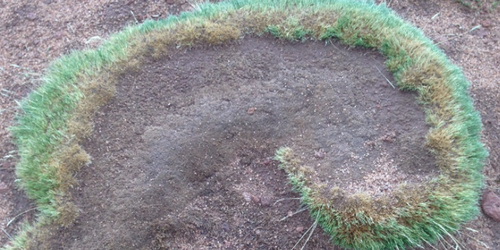Grazing Model Gets an Update
In response to environmental stress, plants in arid climates will often rearrange themselves into a pattern that resembles stripes, rings, or labyrinths, for example. Grazing by animals can also affect vegetation growth and cause the formation of a spiral shape that rotates slowly over time. Now Mrinal Kanti Pal and Swarup Poria from the University of Calcutta, India, present a model of grazing that is more realistic than those previously proposed and use it to pinpoint factors that affect spiral pattern formation [1].
Pal and Poria build on a 2019 model that was developed to explain vegetative spiral patterns observed in Chile [2]. That model accounted for effects such as the competition for water among plants, the natural deaths of plants, and the eating of plants by an animal called a vicuña, which is a relative of the llama. The model indicated that the formation of the rotating spirals is triggered by a transient disturbance, such as an increase in rainfall, that increases plant growth and—if that growth is above a certain threshold—attracts more grazing. However, the 2019 model assumed that grazing increases with vegetation density without limit, even though vicuñas have limited appetites. It also assumed that grazing is proportional to vegetation density at each location, regardless of the density nearby.
Pal and Poria address the first of those limitations by restricting grazing at high vegetation densities. For the second, they use the average vegetation density in a region rather than at a specific point. Looking at the model’s predictions, Pal and Poria find that spirals only appear if the grazing function has a sigmoidal shape. They conclude that their two model improvements represent key factors behind the spiral formation.
–David Ehrenstein
David Ehrenstein is a Senior Editor for Physics Magazine.
References
- M. K. Pal and S. Poria, “Role of herbivory in shaping the dryland vegetation ecosystem: Linking spiral vegetation patterns and nonlinear, nonlocal grazing,” Phys. Rev. E 107, 064403 (2023).
- C. Fernandez-Oto et al., “Spiral vegetation patterns in high-altitude wetlands,” Ecolog. Complexity 37, 38 (2019).




